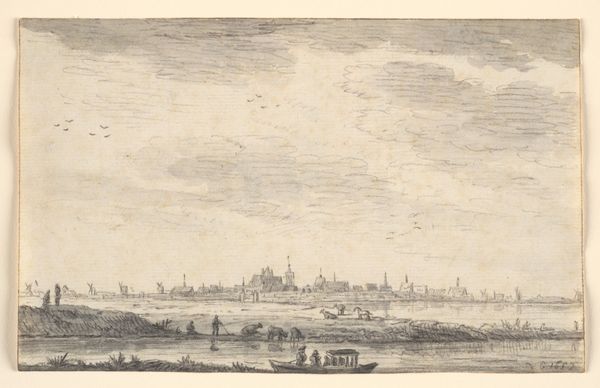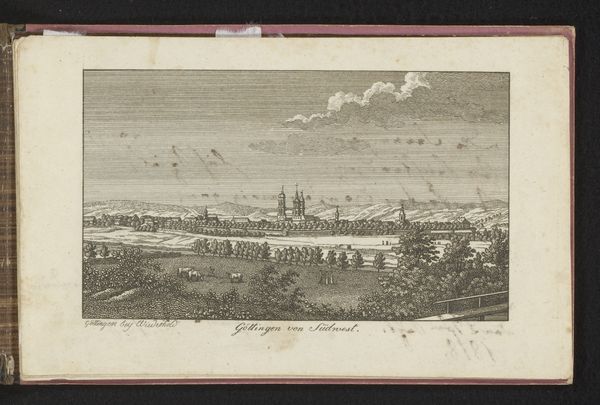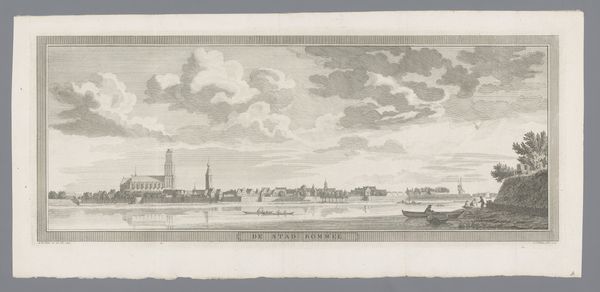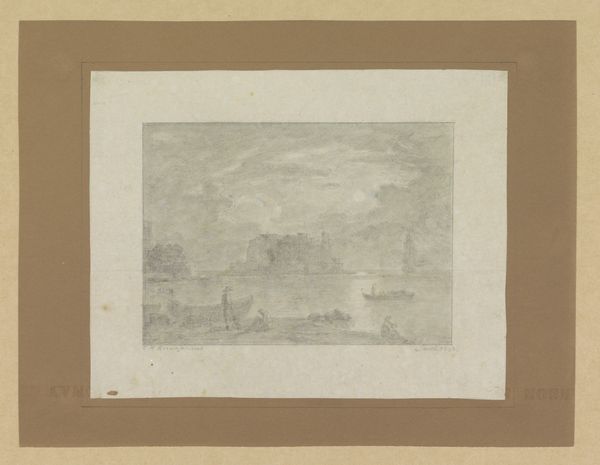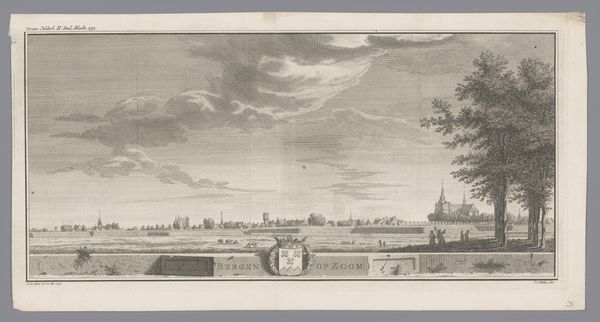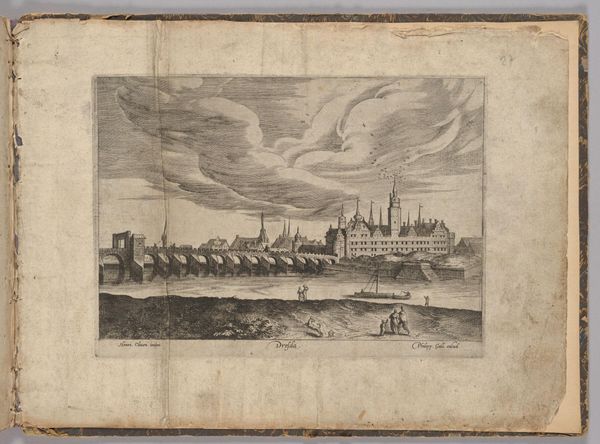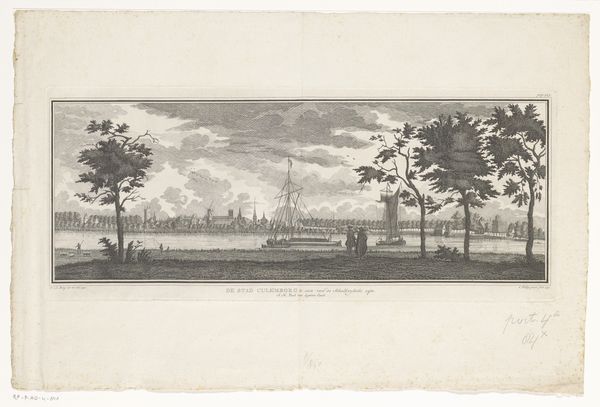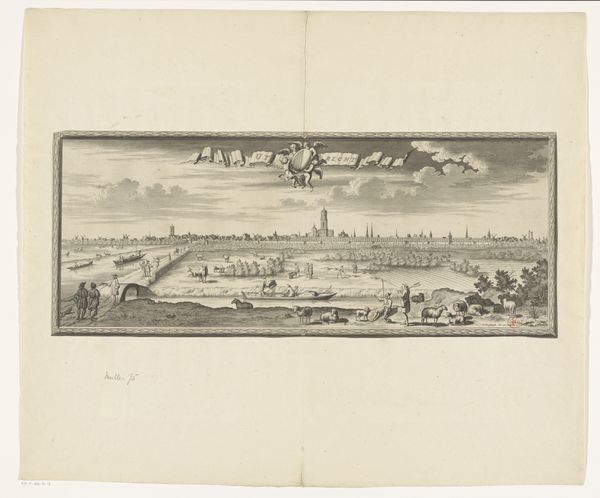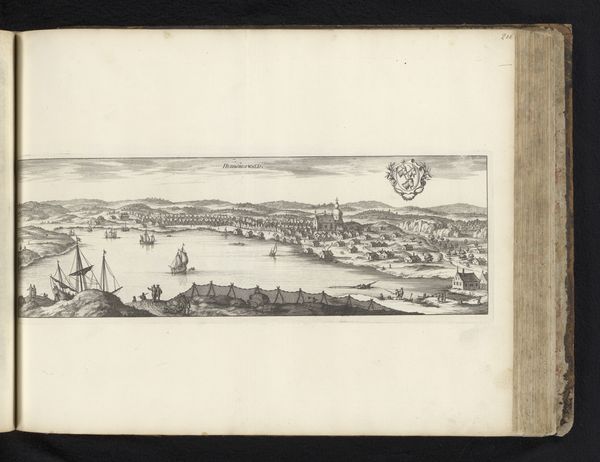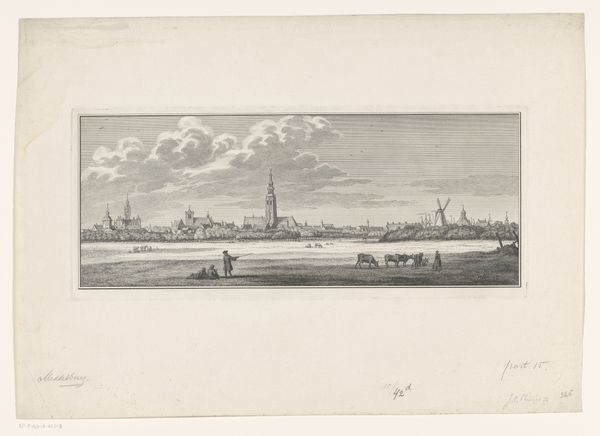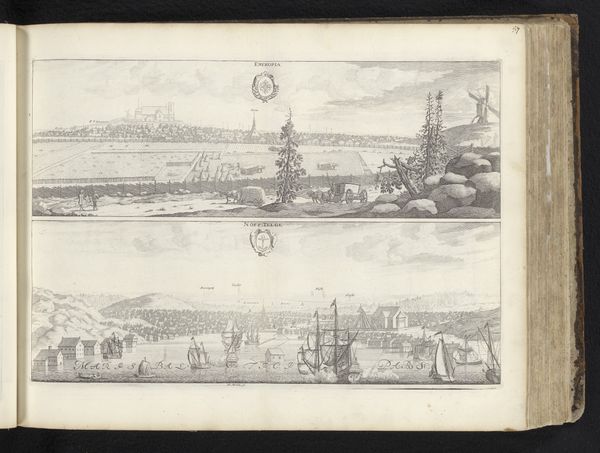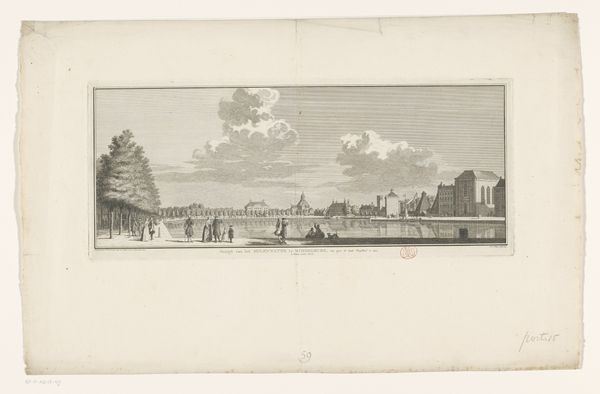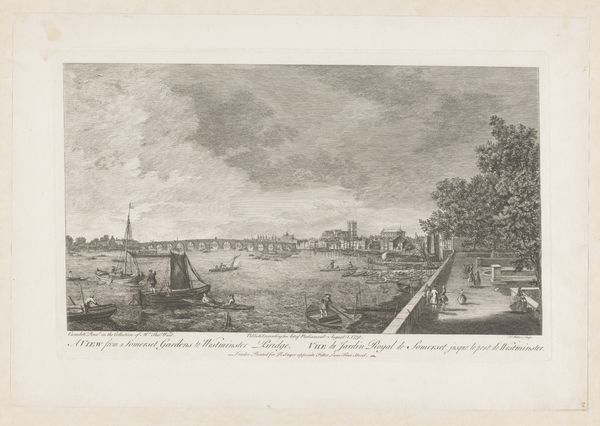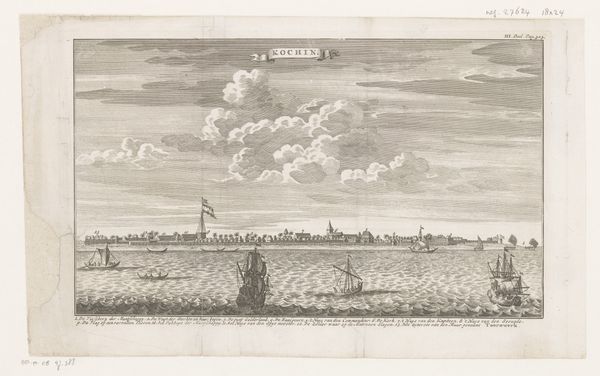
print, watercolor
#
water colours
# print
#
landscape
#
watercolor
#
coloured pencil
#
cityscape
#
genre-painting
#
mixed media
Dimensions: height 161 mm, width 261 mm
Copyright: Rijks Museum: Open Domain
Curator: Today we're looking at an intriguing cityscape rendered in watercolor and print: "Gezicht op Astrakhan," created around 1735 by an anonymous artist. Editor: My immediate impression is one of quiet grandeur, perhaps tinged with melancholy. The muted colors evoke a sense of distance, both temporal and geographical. There is also something oppressive in the dominance of the sky. Curator: Precisely. The composition employs a stark horizontal division—sky, city, water—emphasizing the linear perspective. The tonal variations are subtle, creating atmospheric depth. Consider the strategic placement of the boats, drawing the eye into the cityscape. Semiotically, each boat serves to give an insight into different segments of Astrakhan society at that time. Editor: I agree that this depiction provides clues, although limited ones. Astrakhan in 1735 was a crucial port city, a melting pot of cultures bridging Russia and Asia. While the print might suggest harmonious trade through its numerous ships, it silences the voices of marginalized communities. The artist omits, for instance, the visible impact of class and gender. Are there any women depicted? Curator: While the artist is unattributed, the calculated approach indicates training in design, likely reflecting an academic or documentary function rather than an overt politicization. One could discuss if the flatness flattens hierarchies; what does this imply regarding the work's ability to present a perspective on society? Editor: I feel compelled to push beyond a purely formal interpretation. Given Astrakhan’s geographic importance, isn’t it crucial to read this image through the lens of colonialism and power dynamics? While a complete assessment remains opaque through purely the image itself, an Activist view of "Gezicht op Astrakhan" opens to include considerations about imperial Russia's expansionist ambitions in the East. Curator: You make compelling points. In this image, what may be omitted may have greater value to analysis than what is visible. But it would be a fool's errand to pretend that the artistic ability is a value-neutral element, without bearing any consideration to how power is conveyed in society. Editor: Indeed, this work’s quiet stillness belies layers of historical complexity. It encourages further scrutiny of those unseen narratives that continue to resonate within artistic traditions today. Thank you for that fascinating dive!
Comments
No comments
Be the first to comment and join the conversation on the ultimate creative platform.
